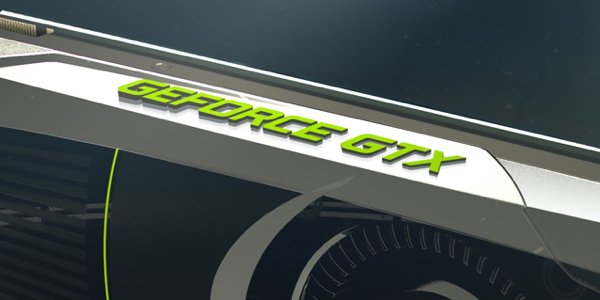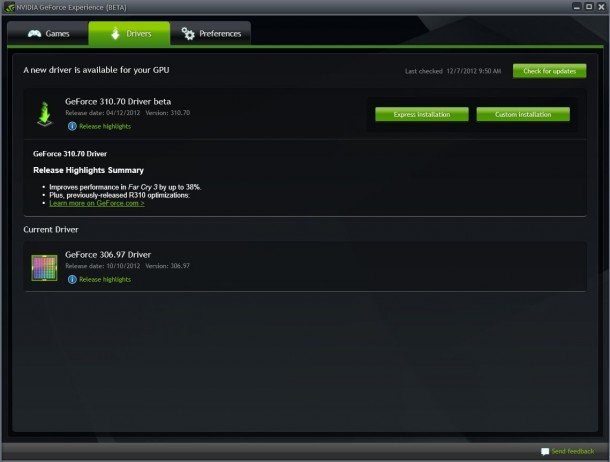GeForce Experience: hands-on with Nvidia's optimisation tool-kit

GeForce Experience is an application that recommends the optimal settings for any game in its database for your exact configuration of hardware. I've been chasing Nvidia for months trying to secure access and finally the closed beta has arrived.
It only works on Nvidia graphics drivers, and only then with the cards from the 400 series Fermi-based cards onwards. But it does take into account your motherboard, CPU and memory settings too. It's an incredibly simple-to-use bit of kit and I think it could become an essential part of any GeForce gamer's software suites.
There has, however, been some resistance to its release online, from the aloof who don't believe anyone could dictate how they should use their machines to those who disagree with the settings that Nvidia have recommended.
But this is a beta test, and it needs all Nvidia-based gamers to get involved to help improve it. The GeForce Experience is not going to be something set in stone by the Nvidia developer teams; it's been set up by them, but now it's being pushed out to the people out there in the real world. It's only by doing this that Nvidia are going to know what it is that people think of as an optimal experience. And that should mean it only gets more accurate.
"Everything that GFE is, is all what we've done internally," said Ben Berraondo, GeForce Senior PR at Nvidia. "Before it's ready for release we need massive feedback from the community on whether our settings are good, whether they're bad, and how you want to see GFE grow before it becomes a serious release."


So how does it work?
“GFE is basically an entry into our cloud,” says Berraondo. “We have massive data farms with thousands of GPUs, CPUs, OSs, we test all of the games on there - we run it through our processes and we pump out the best settings we think are available for your particular hardware. Then it's just one-click and it optimises your settings.”
The biggest gaming news, reviews and hardware deals
Keep up to date with the most important stories and the best deals, as picked by the PC Gamer team.
Nvidia visited me in the office a few weeks back to demonstrate it in operation, and the first test was using Batman: Arkham City - very much an Nvidia favourite, with its heavy use of PhysX effects. However, the mid-range gaming laptop they were presenting it on only had a mobile GTX 660 part inside, and little graphical grunt to spare. Despite that, it was running on the stock, non-native resolution settings at a decent 35-odd frames per second.
A one-click optimise later and the game was running at the native res of the monitor at nearly 50fps. The main changes GFE had made was to prioritise framerate and native resolution over PhysX effects. Which is a reassuring move: Nvidia could easily use GFE to force prioritise Nvidia tech over everything else - but importantly user experience is king.

It's not going to be a vital app for the serial tweaker, or the lucky owners of £400+ graphics cards, but if you're not able to simply push all the settings up to max and bask in glorious framerates, then it can make a real difference.
“Anyone that's spending £400+ on a graphics card anyway, they are going to change their settings regardless,” Nvidia told me. “They're used to it, they know what the stuff means, that's part of the fun. I don't necessarily see the enthusiast using this as a replacement for that. They might use it as a guide initially. This is more for someone who might be getting into PC gaming, might be buying their first serious upgrade. They might turn into more of an enthusiast the more they get into it.”
With one-click optimisation available, GeForce Experience takes a lot of the fear out of PC gaming. If the up-take is large enough, it could easily convert console gamers, hitherto averse to rolling up their sleeves. Even as a long-time PC gamer and tech-enthusiast, I don't know exactly what all the myriad graphics settings mean, and what effect they have. GFE tells you, and gives game-specific examples, too.
Without that knowledge you end up with a large portion of your PC gaming audience suffering through titles with stock settings. And generally those are awful. Yes, CoD, we're looking directly at you. 1024 x 768? Really?

The beauty of the GeForce Experience going forward is that it could become completely invisible. Set it up once to ensure all your games are auto optimised from day one and you'll never need open it up again. As much as some of us will never be able to resist tweaking - and GFE also gives you a good starting point - it would also be nice to get the best experience without having to get our hands dirty.
I'm already a fan.

Dave has been gaming since the days of Zaxxon and Lady Bug on the Colecovision, and code books for the Commodore Vic 20 (Death Race 2000!). He built his first gaming PC at the tender age of 16, and finally finished bug-fixing the Cyrix-based system around a year later. When he dropped it out of the window. He first started writing for Official PlayStation Magazine and Xbox World many decades ago, then moved onto PC Format full-time, then PC Gamer, TechRadar, and T3 among others. Now he's back, writing about the nightmarish graphics card market, CPUs with more cores than sense, gaming laptops hotter than the sun, and SSDs more capacious than a Cybertruck.